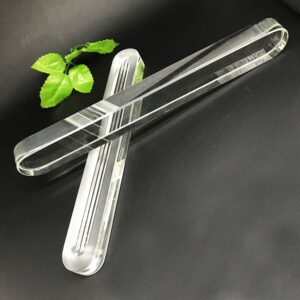Why Transparent Gauge Glass is Essential for Industrial Operations
Core Advantages
- Real-time visual monitoring: Provides instant liquid level verification with 99.8% accuracy
- Pressure resistance: Withstands up to 6.9MPa (1,000psi) in boiler applications
- Chemical compatibility: Resists 98% sulfuric acid and 50% sodium hydroxide solutions
Industry Applications
| Sector | Typical Use Case | Temperature Range |
|---|---|---|
| Petrochemical | Crude oil storage tanks | -20°C to 400°C |
| Pharmaceutical | Bioreactor monitoring | 4°C to 121°C (sterile) |
| Power Generation | Boiler drum level indication | 200°C to 500°C |
 3 Main Types of Transparent Gauge Glass
3 Main Types of Transparent Gauge Glass
1. Reflex Gauge Glass
- Working principle: Total internal reflection optics
- Best for: High-pressure steam applications (ASME B31.1 compliant)
- Visibility: Creates 3:1 contrast ratio between liquid/vapor phases
2. Tubular Gauge Glass
- Structure: Single cylindrical borosilicate tube
- Pressure limit: 2.5MPa (360psi) standard models
- Special versions: Armored variants with stainless steel mesh
3. Mica-Shielded Glass
- Protection layer: 0.5mm muscovite mica coating
- Chemical resistance: Withstands pH 0-14 environments
- Maintenance: Mica replacement every 18-24 months
Professional Maintenance Protocol
Daily/Weekly Checks
- Visual inspection: Use LED flashlight at 45° angle
- Seal examination: Verify gasket compression (12-15Nm torque)
Quarterly Maintenance
Cleaning procedure:
- Isopropyl alcohol (99% purity) + microfiber cloth
- Avoid abrasive cleaners (scratch resistance <Mohs 6)
Component replacement:
- Gasket change interval: 2 years (NBR) or 5 years (PTFE)
- Full assembly replacement after 10,000 thermal cycles
Emergency Response
- Crack detection: Acoustic emission testing
- Safe shutdown: Follow ASME BPVC Section VII guidelines
Technical Specifications Comparison
| Parameter | Reflex Type | Tubular Type | Mica-Shielded |
|---|---|---|---|
| Max Pressure | 6.9MPa | 2.5MPa | 4.0MPa |
| Temp Range | -40°C~500°C | -20°C~300°C | -196°C~800°C |
| Light Transmission | 92% | 95% | 88% |
| MTBF | 8 years | 5 years | 10 years |
Installation Best Practices
- Mounting alignment: Laser-level verified (±0.5° tolerance)
- Thermal expansion: Allow 1.2mm clearance per 100°C ΔT
- Safety factor: Always specify 2X operating pressure rating
Pro Tip: For critical applications, combine with electronic level sensors for redundant monitoring (SIL-2 compliance).


 3 Main Types of Transparent Gauge Glass
3 Main Types of Transparent Gauge Glass